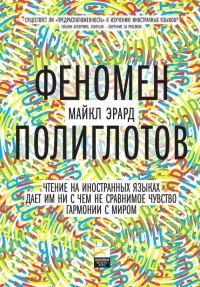Ознакомительная версия. Доступно 32 страниц из 159
Ekman, Paul, E. Richard Sorenson, and Wallace V. Friesen. 1969. “Pan-Cultural Elements in Facial Displays of Emotion.” Science 164 (3875): 86–88.
Elfenbein, Hillary Anger, and Nalini Ambady. 2002. “On the Universality and Cultural Specificity of Emotion Recognition: A Meta-Analysis.” Psychological Bulletin 128 (2): 203–235.
Ellingsen, Dan-Mikael, Johan Wessberg, Marie Eikemo, Jaquette Liljencrantz, Tor Endestad, Håkan Olausson, and Siri Leknes. 2013. “Placebo Improves Pleasure and Pain Through Opposite Modulation of Sensory Processing.” Proceedings of the National Academy of Sciences 110 (44): 17993–17998.
Ellis, Bruce J., and W. Thomas Boyce. 2008. “Biological Sensitivity to Context.” Current Directions in Psychological Science 17 (3): 183–187.
Emmons, Robert A., and Michael E. McCullough. 2003. “Counting Blessings Versus Burdens: An Experimental Investigation of Gratitude and Subjective Well-Being in Daily Life.” Journal of Personality and Social Psychology 84 (2): 377–389.
Emmons, Scott W. 2012. “The Mood of a Worm.” Science 338 (6106): 475–476.
Ensor, Rosie, and Claire Hughes. 2008. “Content or Connectedness? Mother-Child Talk and Early Social Understanding.” Child Development 79 (1): 201–216.
Epley, Nicholas, Adam Waytz, and John T. Cacioppo. 2007. “On Seeing Human: A Three-Factor Theory of Anthropomorphism.” Psychological Review 114 (4): 864–886.
Erbas, Yasemin, Eva Ceulemans, Johanna Boonen, Ilse Noens, and Peter Kuppens. 2013. “Emotion Differentiation in Autism Spectrum Disorder.” Research in Autism Spectrum Disorders 7 (10): 1221–1227.
Erbas, Yasemin, Eva Ceulemans, Madeline Lee Pe, Peter Koval, and Peter Kuppens. 2014. “Negative Emotion Differentiation: Its Personality and Well-Being Correlates and a Comparison of Different Assessment Methods.” Cognition and Emotion 28 (7): 1196–1213.
Erickson, Kirk I., Michelle W. Voss, Ruchika Shaurya Prakash, Chandramallika Basak, Amanda Szabo, Laura Chaddock, Jennifer S. Kim, Susie Heo, Heloisa Alves, and Siobhan M. White. 2011. “Exercise Training Increases Size of Hippocampus and Improves Memory.” Proceedings of the National Academy of Sciences108 (7): 3017–3022.
Ernst, Aurélie, and Jonas Frisén. 2015. “Adult Neurogenesis in Humans-Common and Unique Traits in Mammals.” PLOS Biology 13 (1): e1002045. doi:10.1371/journal.pbio.1002045.
ESPN. 2014. “Bucks Hire Facial Coding Expert.” December 27. http://espn.go.com/nba/story/_/id/12080142/milwaukee-bucks-hire-facial-coding-expert-help-team-improve.
Etkin, Amit, and Tor D. Wager. 2007. “Functional Neuroimaging of Anxiety: A Meta-Analysis of Emotional Processing in PTSD, Social Anxiety Disorder, and Specific Phobia.” American Journal of Psychiatry 164 (10): 1476–1488.
Fabre-Thorpe, Michèle. 2010. “Concepts in Monkeys.” In The Making of Human Concepts, edited by Denis Mareschal, Paul C. Quinn, and Stephen E. G. Lea, 201–226. New York: Oxford University Press.
Fachner, George, Steven Carter, and Collaborative Reform Initiative. 2015. “An Assessment of Deadly Force in the Philadelphia Police Department.” Washington, DC: Office of Community Oriented Policing Services.
Feigenson, Lisa, and Justin Halberda. 2008. “Conceptual Knowledge Increases Infants’ Memory Capacity.” Proceedings of the National Academy of Sciences 105 (29): 9926–9930.
Feinstein, Justin S., Ralph Adolphs, Antonio Damasio, and Daniel Tranel. 2011. “The Human Amygdala and the Induction and Experience of Fear.” Current Biology 21 (1): 34–38.
Feinstein, Justin S., David Rudrauf, Sahib S. Khalsa, Martin D. Cassell, Joel Bruss, Thomas J. Grabowski, and Daniel Tranel. 2010. “Bilateral Limbic System Destruction in Man.” Journal of Clinical and Experimental Neuropsychology 32 (1): 88–106.
Felitti, Vincent J., Robert F. Anda, Dale Nordenberg, David F. Williamson, Alison M. Spitz, Valerie Edwards, Mary P. Koss, and James S. Marks. 1998. “Relationship of Childhood Abuse and Household Dysfunction to Many of the Leading Causes of Death in Adults: The Adverse Childhood Experiences (ACE) Study.” American Journal of Preventive Medicine 14 (4): 245–258.
Feresin, Emiliano. 2011. “Italian Court Reduces Murder Sentence Based on Neuroimaging Data.” Nature News Blog, September 1. http://blogs.nature.com/news/2011/09/italian_court_reduces_murder_s.html.
Fernald, Anne, Virginia A. Marchman, and Adriana Weisleder. 2013. “SES Differences in Language Processing Skill and Vocabulary Are Evident at 18 Months.” Developmental Science 16 (2): 234–248.
Fernández-Dols, José-Miguel, and María-Angeles Ruiz-Belda. 1995. “Are Smiles a Sign of Happiness? Gold Medal Winners at the Olympic Games.” Journal of Personality and Social Psychology 69 (6): 1113–1119.
Fields, Howard L., and Elyssa B. Margolis. 2015. “Understanding Opioid Reward.” Trends in Neurosciences 38 (4): 217–225.
Finger, Stanley. 2001. Origins of Neuroscience: A History of Explorations into Brain Function. New York: Oxford University Press.
Finlay, Barbara L., and Ryutaro Uchiyama. 2015. “Developmental Mechanisms Channeling Cortical Evolution.” Trends in Neurosciences 38 (2): 69–76.
Finn, Emily S., Xilin Shen, Dustin Scheinost, Monica D. Rosenberg, Jessica Huang, Marvin M. Chun, Xenophon Papademetris, and R. Todd Constable. 2015. “Functional Connectome Fingerprinting: Identifying Individuals Using Patterns of Brain Connectivity.” Nature Neuroscience 18 (11): 1664–1671.
Firestein, Stuart. 2012. Ignorance: How It Drives Science. New York: Oxford University Press.
Fischer, Håkan, Christopher I. Wright, Paul J. Whalen, Sean C. McInerney, Lisa M. Shin, and Scott L. Rauch. 2003. “Brain Habituation During Repeated Exposure to Fearful and Neutral Faces: A Functional MRI Study.” Brain Research Bulletin 59 (5): 387–392.
Fischer, Shannon. 2013. “About Face.” Boston Magazine, July. 68–73.
Fisher, Helen E., Lucy L. Brown, Arthur Aron, Greg Strong, and Debra Mashek. 2010. “Reward, Addiction, and Emotion Regulation Systems Associated with Rejection in Love.” Journal of Neurophysiology104 (1): 51–60.
Fodor, Jerry A. 1983. The Modularity of Mind: An Essay on Faculty Psychology. Cambridge, MA: MIT Press.
Ford, Brett Q., and Maya Tamir. 2012. “When Getting Angry Is Smart: Emotional Preferences and Emotional Intelligence.” Emotion 12 (4): 685–689.
Ford, Earl S. 2002. “Does Exercise Reduce Inflammation? Physical Activity and C-Reactive Protein Among US Adults.” Epidemiology 13 (5): 561–568.
Fossat, Pascal, Julien Bacqué-Cazenave, Philippe De Deurwaerdère, Jean-Paul Delbecque, and Daniel Cattaert. 2014. “Anxiety-Like Behavior in Crayfish Is Controlled by Serotonin.” Science 344 (6189): 1293–1297.
Ознакомительная версия. Доступно 32 страниц из 159
























